There are aircraft that have become iconic for their service in combat, while others were notable for their innovative features. The Republic F-84 Thunderjet was an aircraft that was arguably a bit too late and a little lacking in innovation, yet, it definitely did get the job done. The Thunderjet saw service in the Korean War, where it even had a distinguished record — yet, it was largely overshadowed by the F-86 Sabre, while it was also outmatched by the more advanced Soviet Mikoyan-Gurevich MiG-15.
The Thunderjet was described by aviation experts soon after it arrived as looking like a “flying Coke bottle long before the area-rule theory was ever heard of.” It was also one of those aircraft that put in year after year of steady, reliable service without ever achieving the glamour that accrued with so many — at times, undeservedly — contemporary aircraft from the early Cold War.
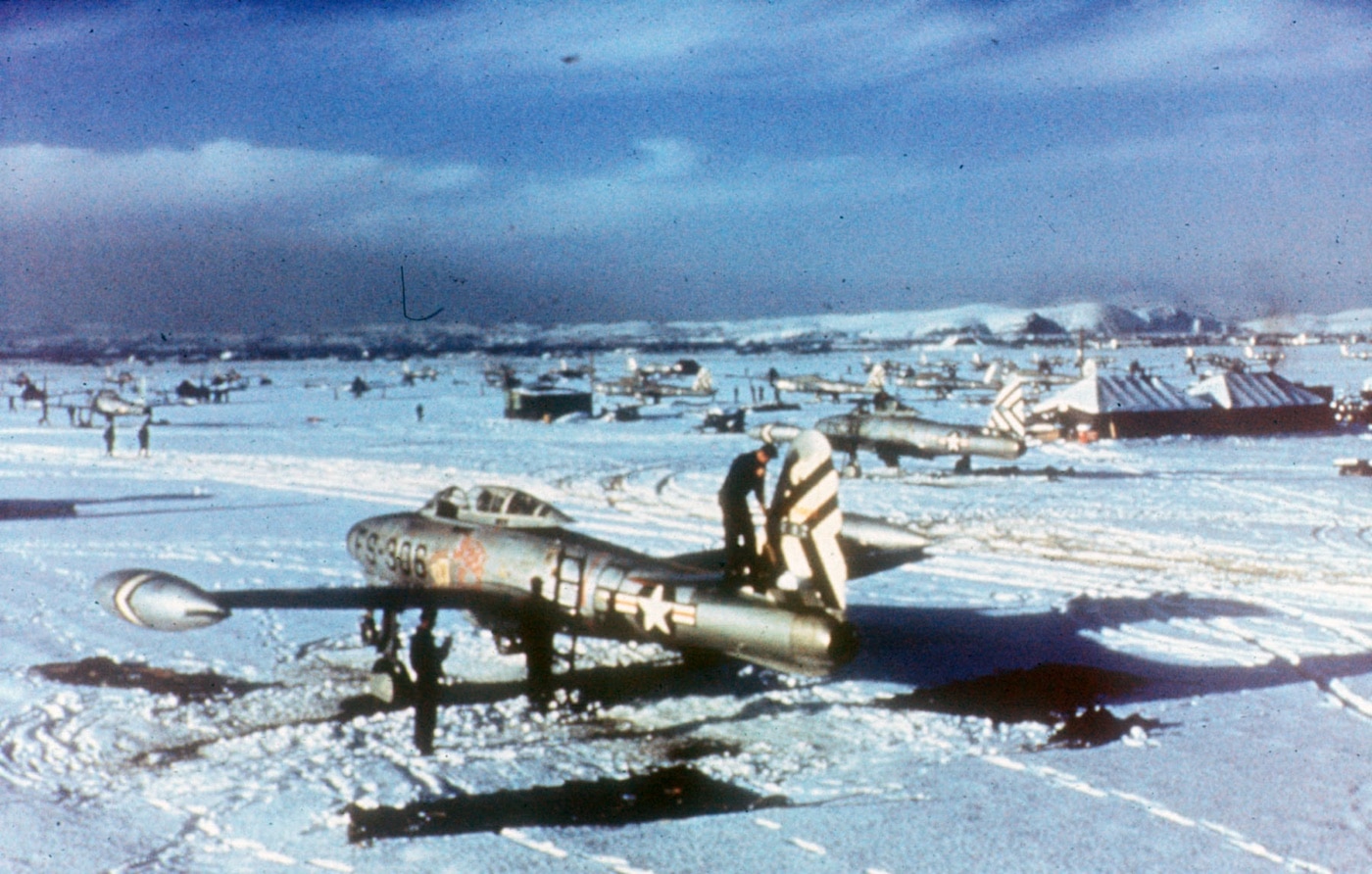
It went on to see service around the world and also achieved a number of notable milestones including:
- first U.S. fighter to utilize in-flight refueling and
- first fighter capable of carrying a nuclear weapon — in this case, the Mark 7 nuclear bomb.
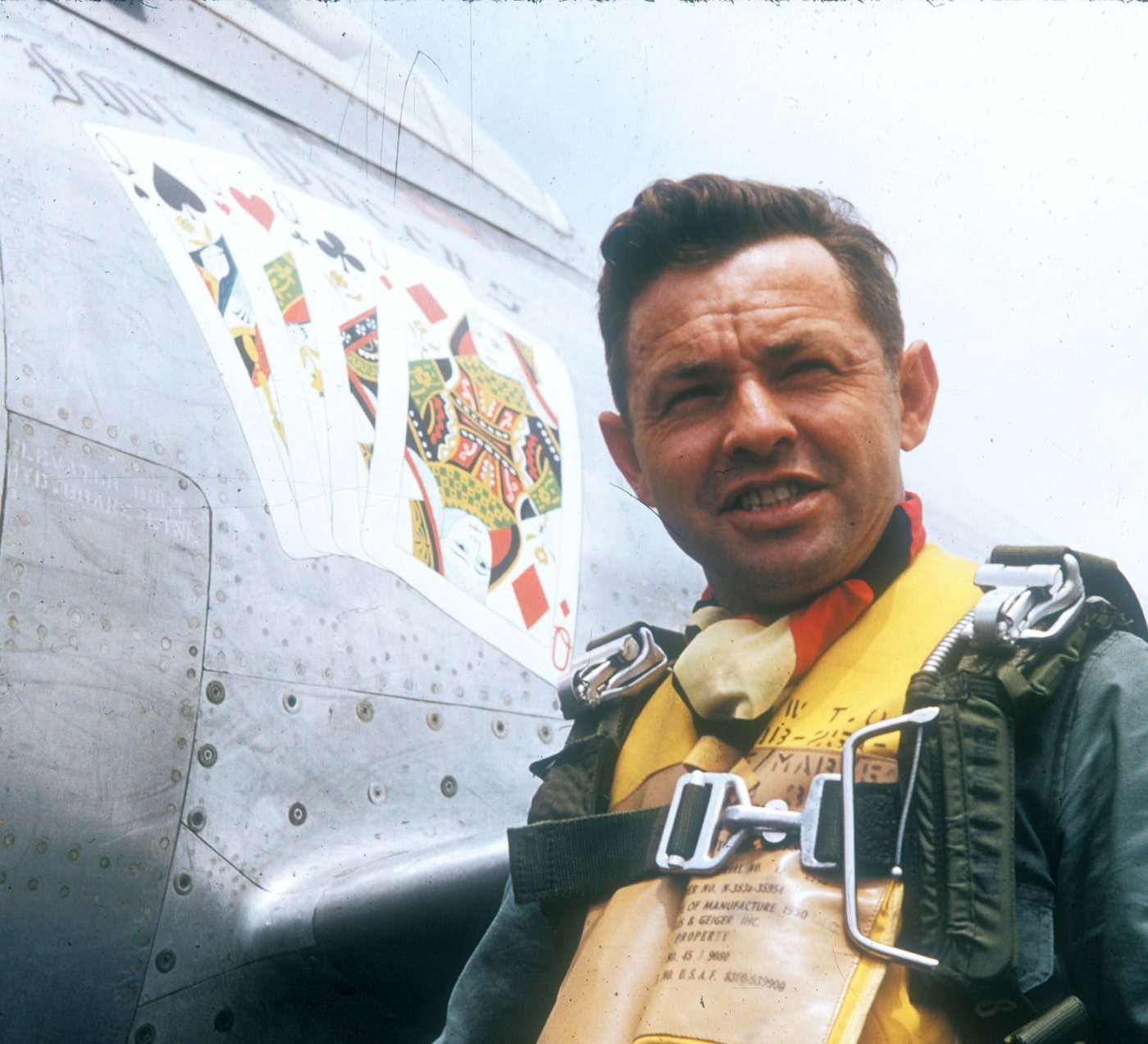
Though it would go on to fill many roles during its service life and went through several iterations, the program was almost canceled due to mechanical problems with the early models.
Origins of the Thunderjet
Though it is now remembered as a workhorse of the Korean War, the origins of the Republic F-84 date back to the Second World War when, in early 1944, the United States Army Air Forces (USAAF) issued a request for proposals that sought to build a fighter-bomber that could reach a top speed of 600 mph.
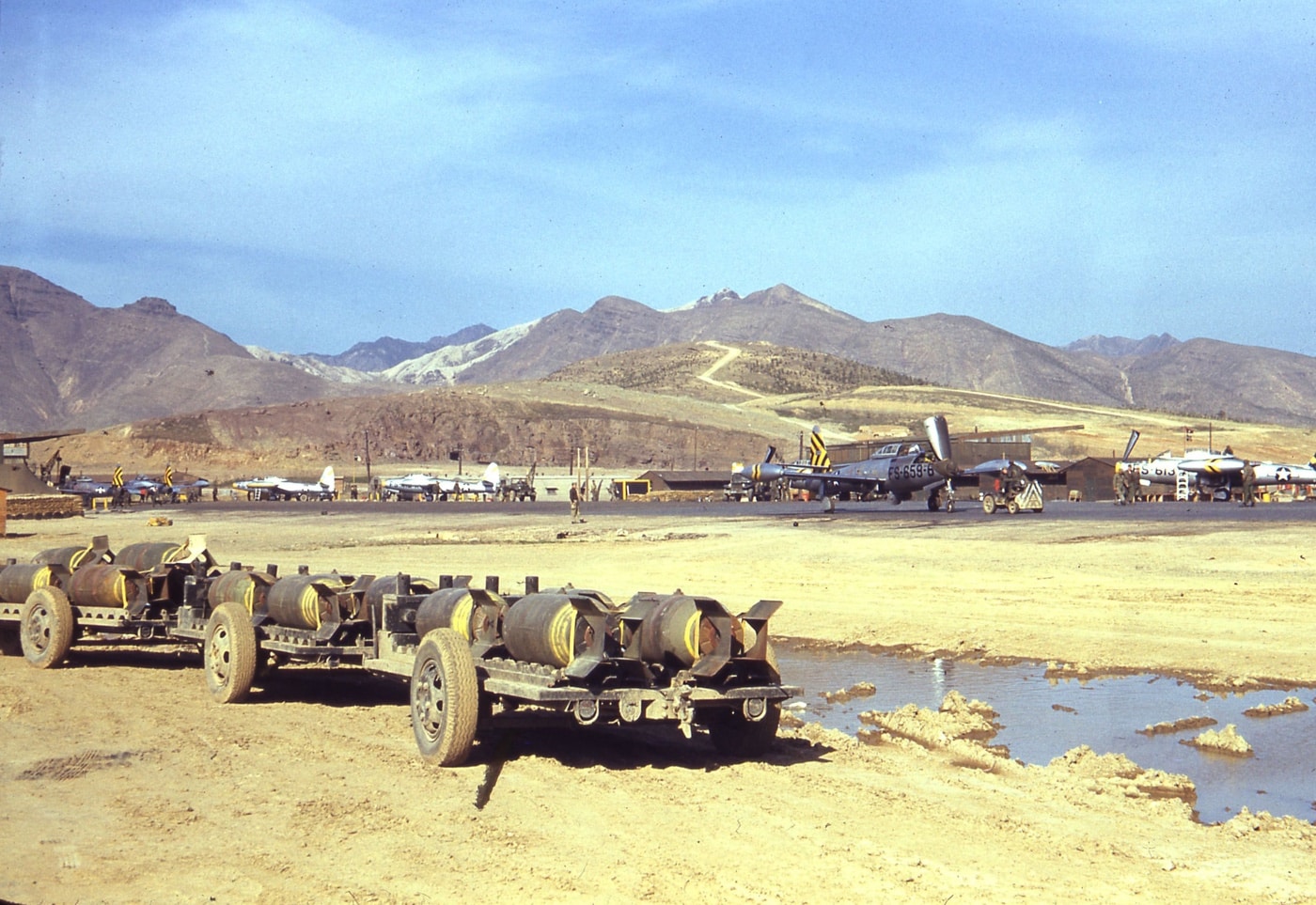
The design team at Republic Aviation initially considered modifying a P-47 Thunderbolt airframe to accept a jet engine in hopes of winning the contract. After studying derivatives of the propeller-driven with an axial turbojet, in November 1944 the plan was subsequently discarded in favor of an all-new, straight-wing, single-seat fighter-bomber designed around an axial flow turbojet.
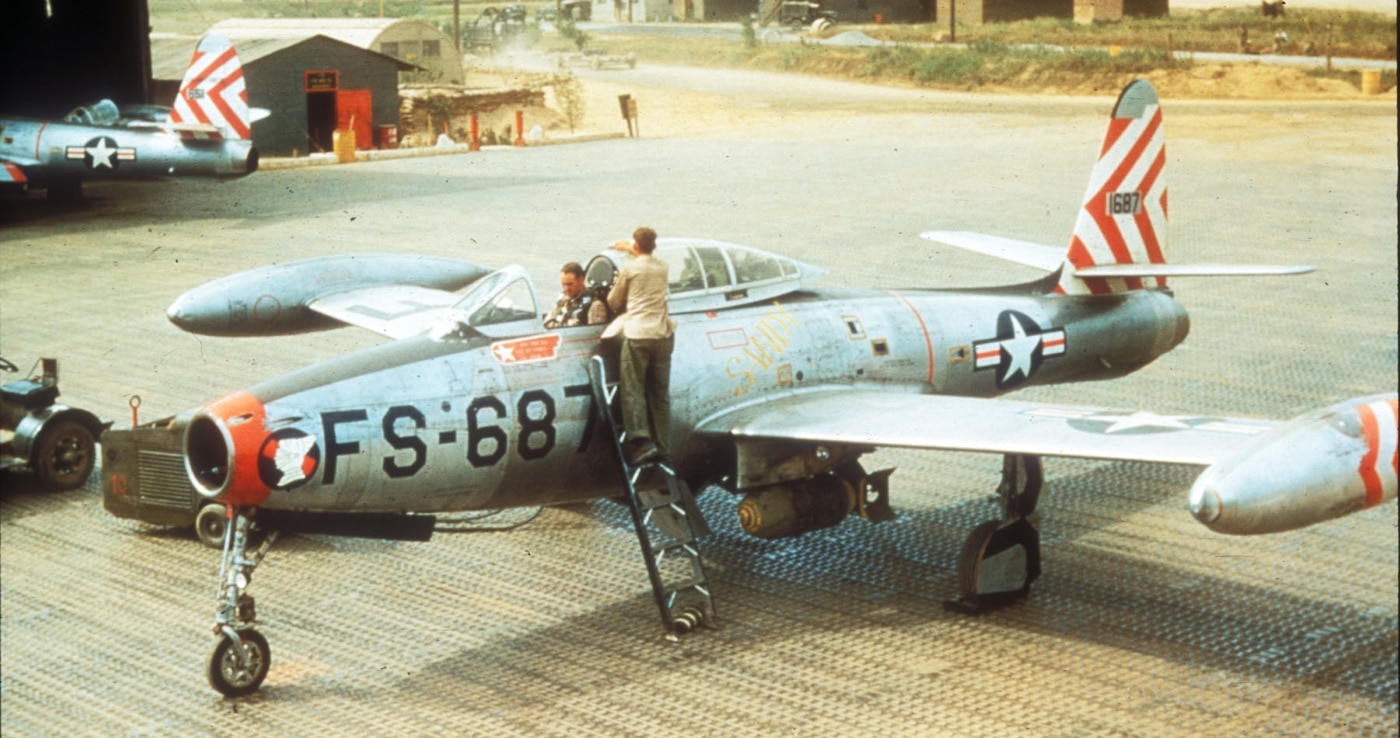
It had a slender fuselage, nose intake to ducts, which split each side of the nosewheel bay and cockpit, and unswept wings. The resulting aircraft, then designated XP-84, flew for the first time on February 28, 1946 from Muroc Army Air Field — later to become Edwards Air Force Base (AFB).
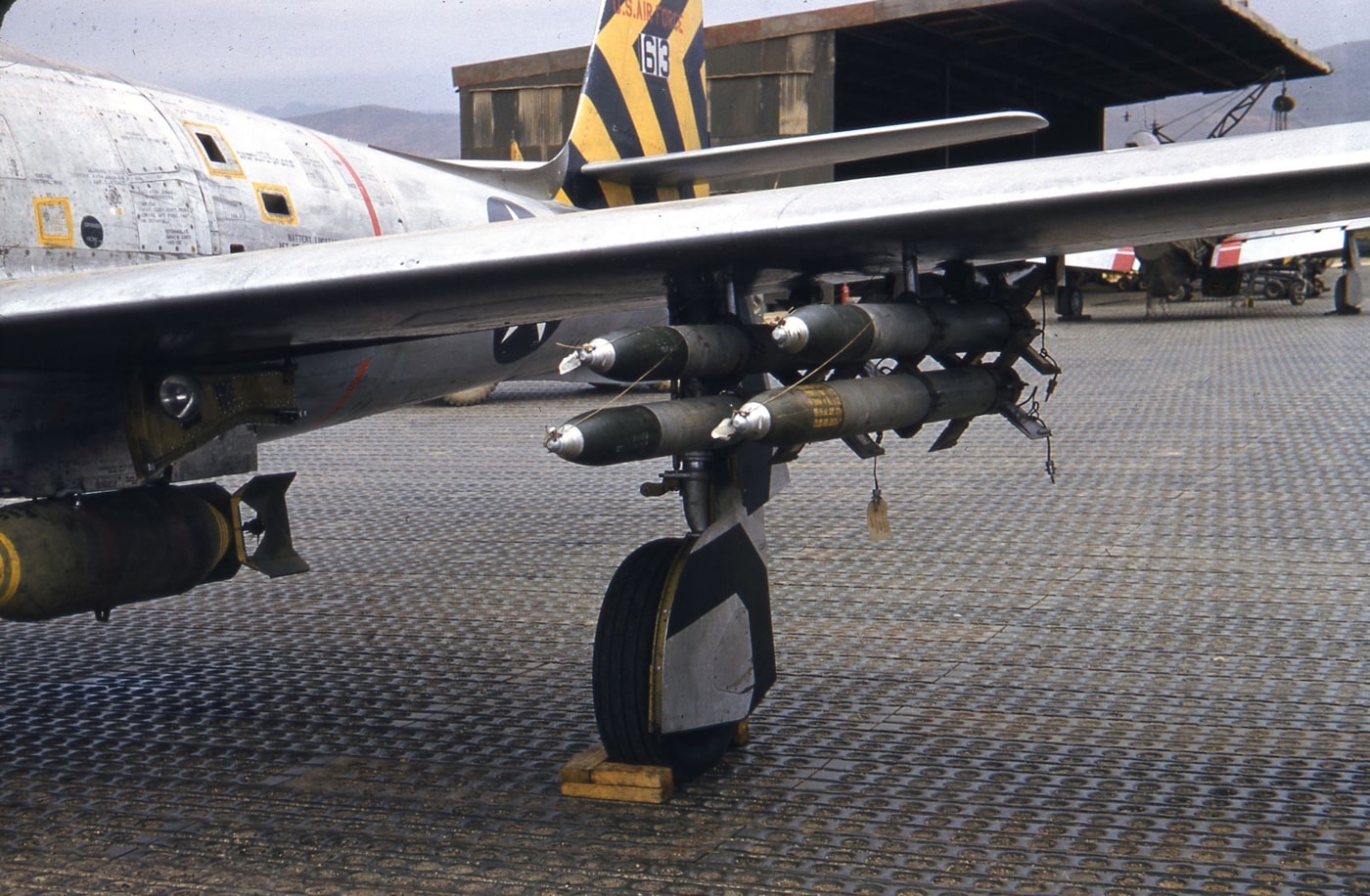
The XP-84 achieved the goal of the USAAF, and in September 1947, a second prototype even set a U.S. speed record of 611 mph. It was slightly slower than the official world record of 612.2 mph held by the British Gloster Meteor — although neither aircraft achieved the 624.2 mph set by the German Me 163A rocket plane in April 1941.
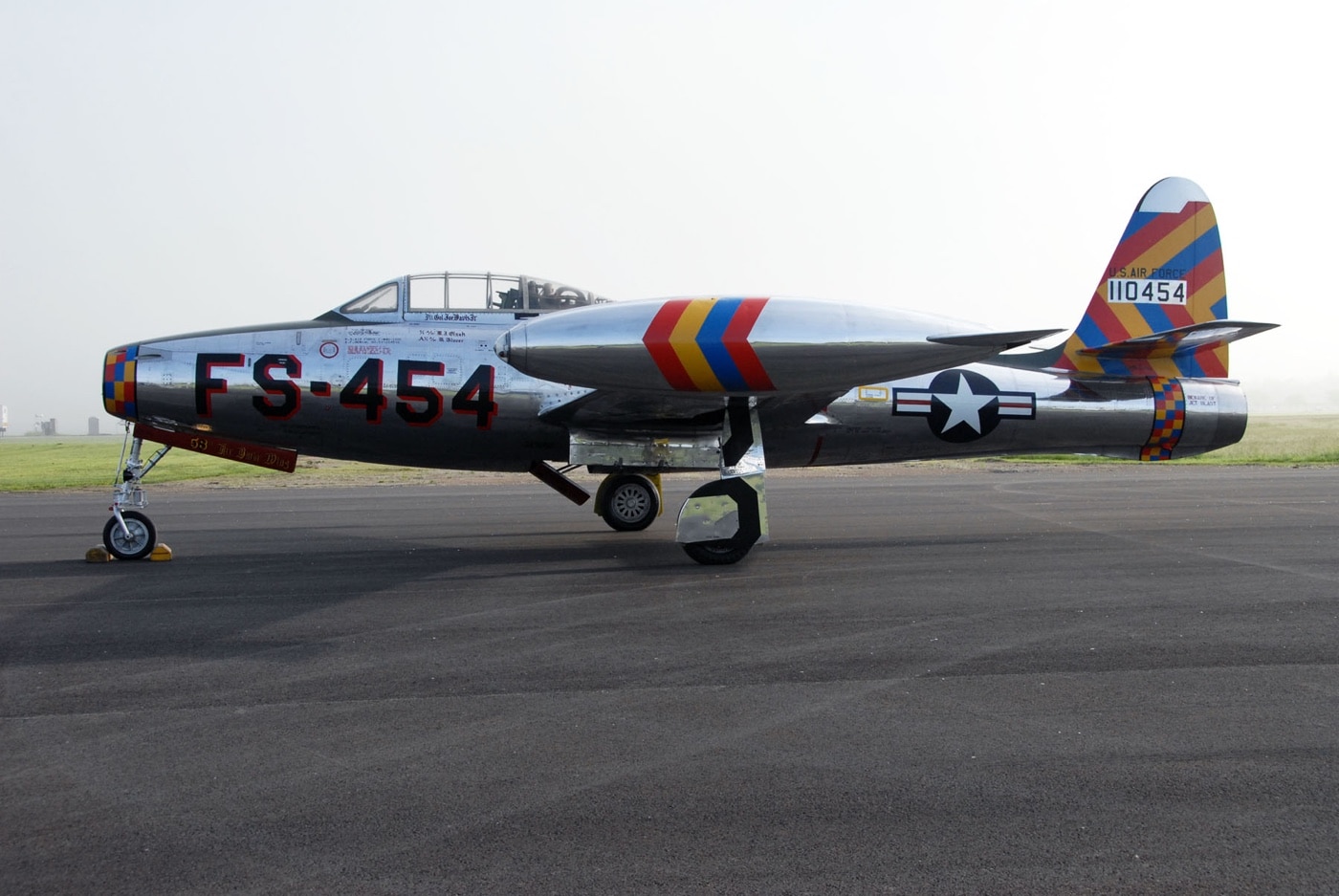
A month after its record-setting flight, in October 1947, the United States Air Force became a separate service, and the “P” (for pursuit) designation employed by the USAAF was replaced by “F” (for fighter). The new fighter-bomber became the F-84 Thunderjet.
A Problem-Plagued Aircraft… Initially
The new fighter-bomber arrived too late for the Second World War, but it was arguably still an aircraft designed for the threats from that conflict rather than what was to come. It was pioneering, yet not revolutionary.
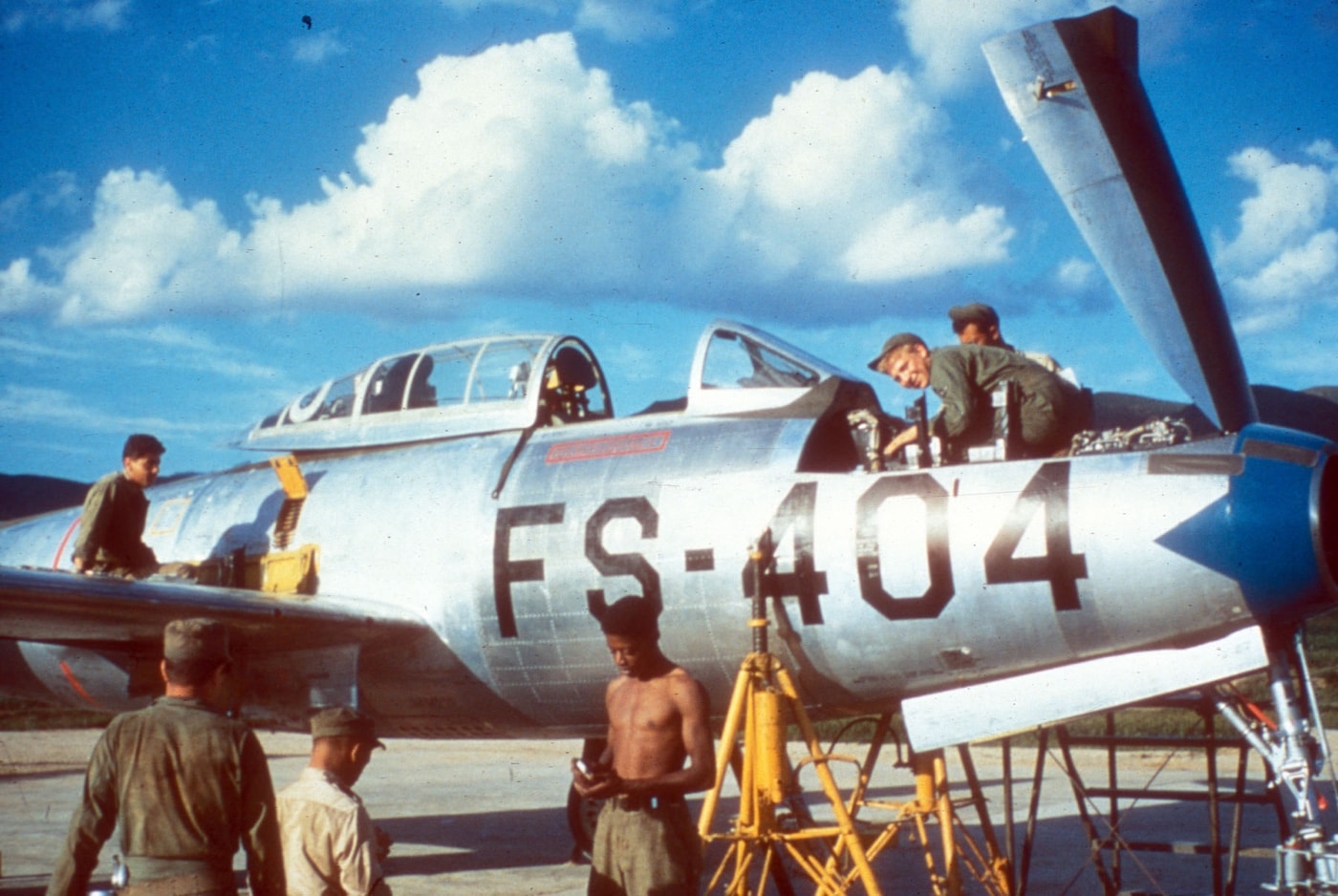
However, the first production model — the F-84B — was noted for featuring an air-conditioned cockpit and an ejection seat. In total, 226 aircraft were built in that initial production run; yet, it was also unfortunately plagued by structural problems and, as a result, had a short operational life. A number of the F-84Bs were later obtained by the U.S. Navy and used as unpiloted drones as the F-84KX.
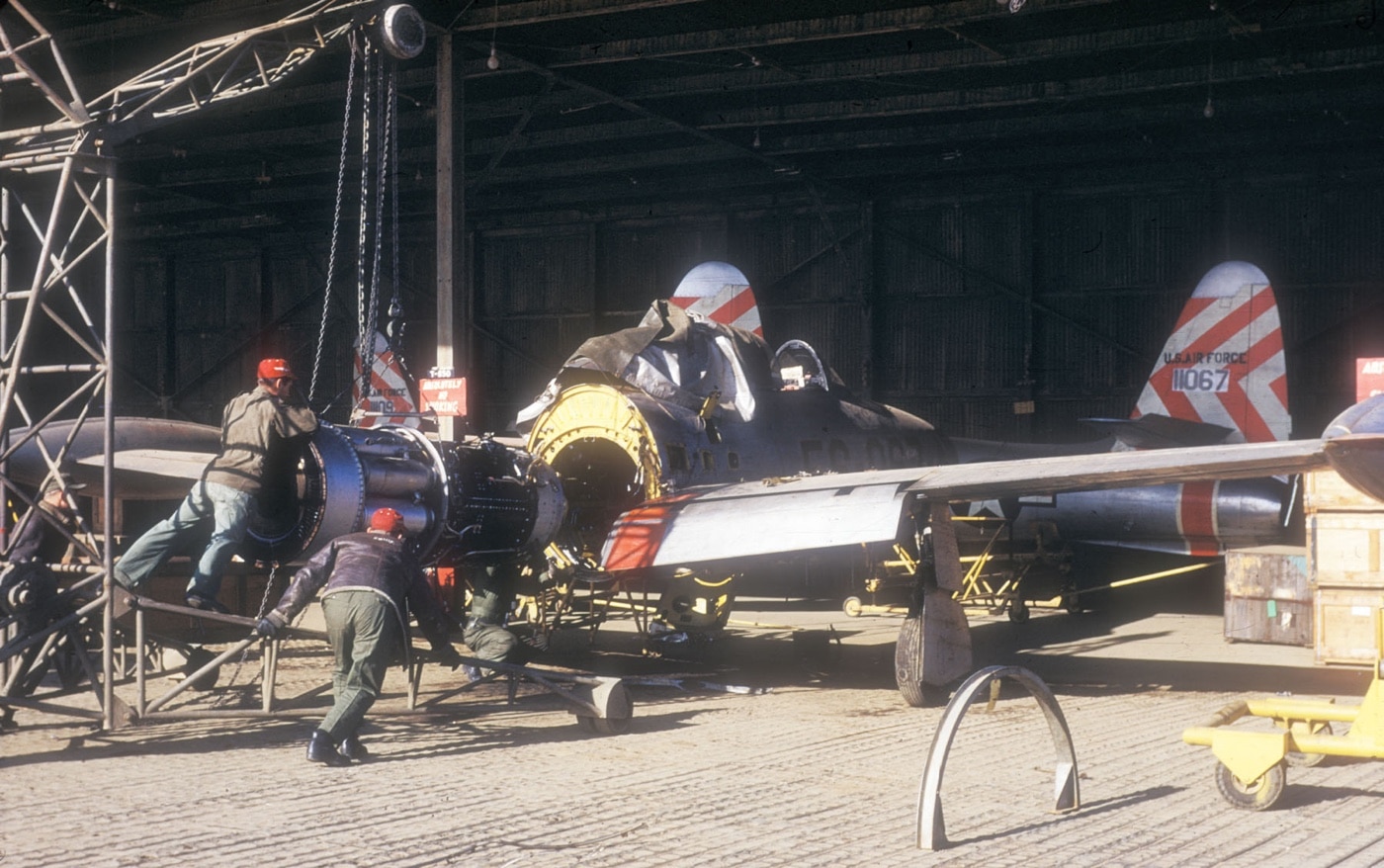
The Thunderjet also earned the unflattering nickname the “Mechanic’s Nightmare” and an update program was initiated almost immediately. The F-84C model that followed resolved some of the issues, but introduced others. It reverted to a more reliable engine, and featured improved fuel, hydraulic and electrical systems. However, the F-84C had such serious problems with the ejection seat that those aircraft were never combat-certified and instead were passed on to training and for use by Air National Guard (ANG) units.
The F-84D was also little improved, remaining a “Mechanic’s Nightmare,” and it took until May 1949’s F-84E for a reliable aircraft to truly take shape.
The Thunderjet Finally Delivered
With the development of the F-84E, the Thunderjet became the United States Air Force’s main strike aircraft in the early Cold War. During the Korean War, the aircraft was primarily employed in ground attack operations. The Thunderjet proved to be a flexible design, serving as day fighter, long-range escort fighter and fighter-bomber. It was employed in attacks against enemy railroads, dams, bridges, supply depots and troop concentrations with bombs, rockets and napalm.
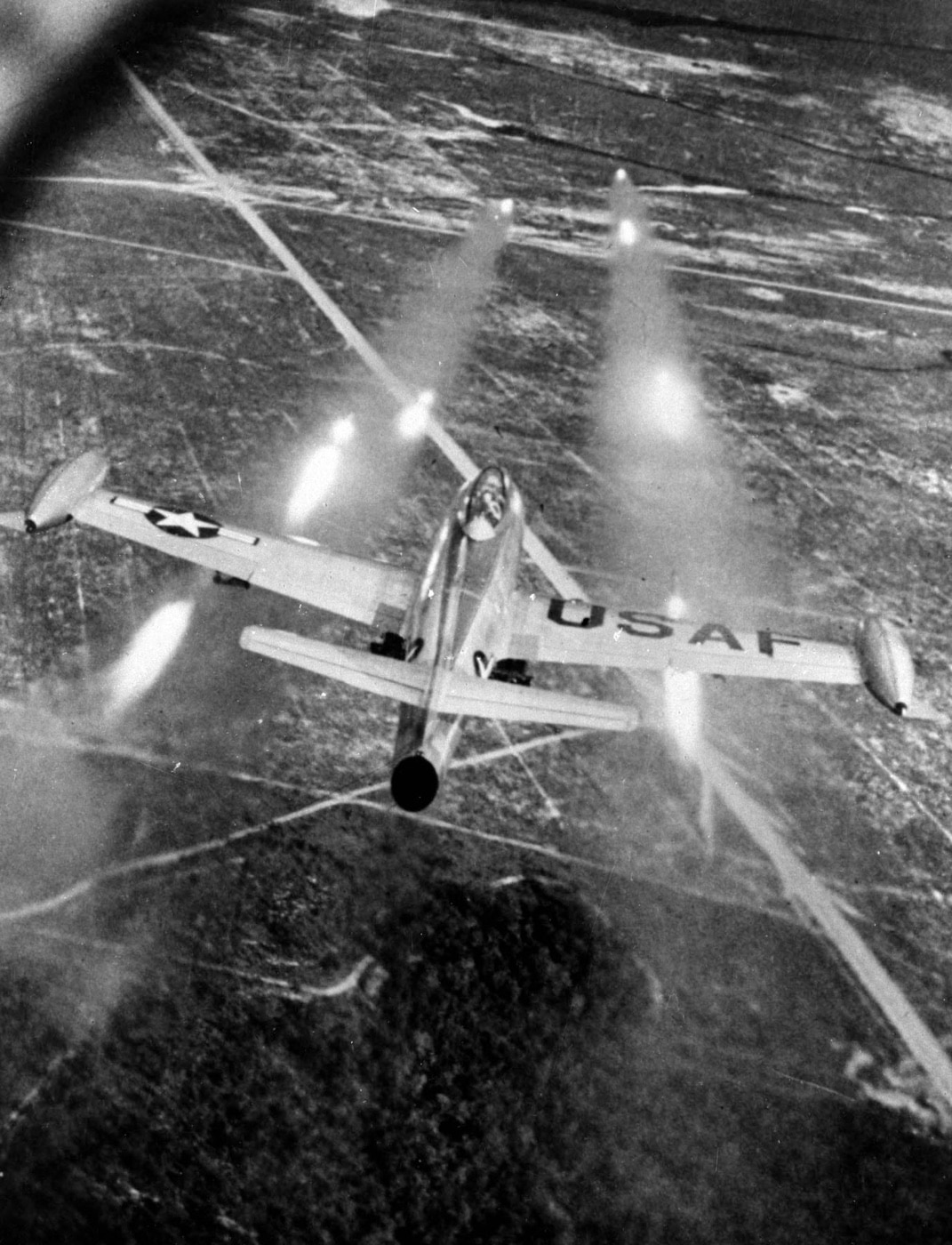
The aircraft was typically armed with six .50-cal. machine guns, while it could carry eight 5-inch rockets, 2,000 pounds of bombs or napalm tanks. It was powered by an Allison J35 engine that provided 4,900 pounds of thrusts, allowing the Thunderjet to reach a maximum speed of 620 mph, while it had a range of nearly 1,500 miles.
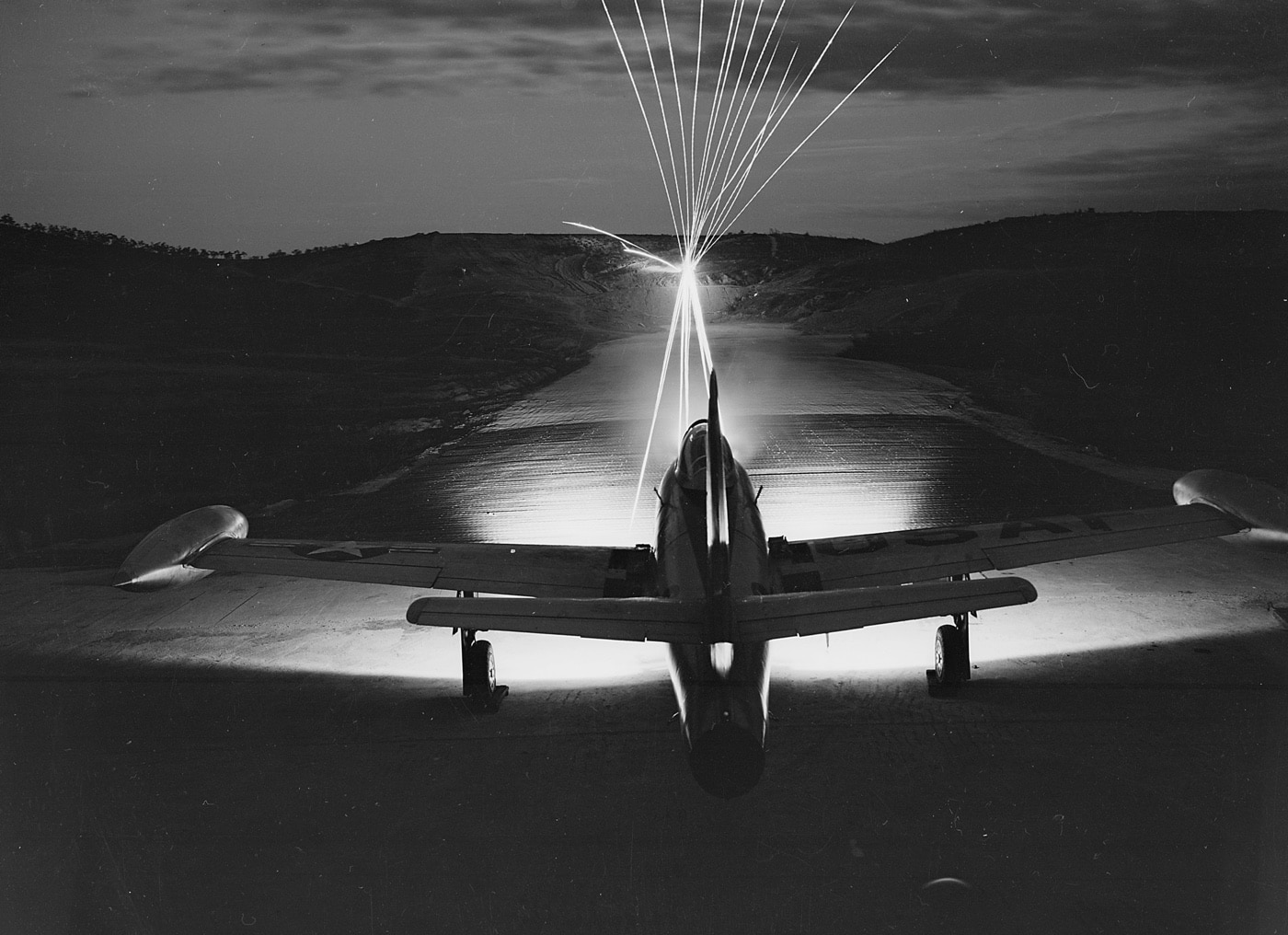
In total, the F-84 flew 86,408 missions, during which it dropped some 55,586 tons (50,427 metric tons) of bombs and 6,129 tons (5,560 metric tons) of napalm, while the aircraft fired 22,154 rockets.
The Nuclear-capable F-85G — And Variants
In what is now somewhat confusing given the model numbers, the F-84G, delivered in 1951 and subsequently used heavily during the Korean War, was the final version of the Thunderjet before the plane evolved into the F-84F Thunderstreak, a swept-wing fighter version; and the RF-84F Thunderflash, a swept-wing photo reconnaissance version. It was essentially a new design that also featured a new engine and transonic performance.
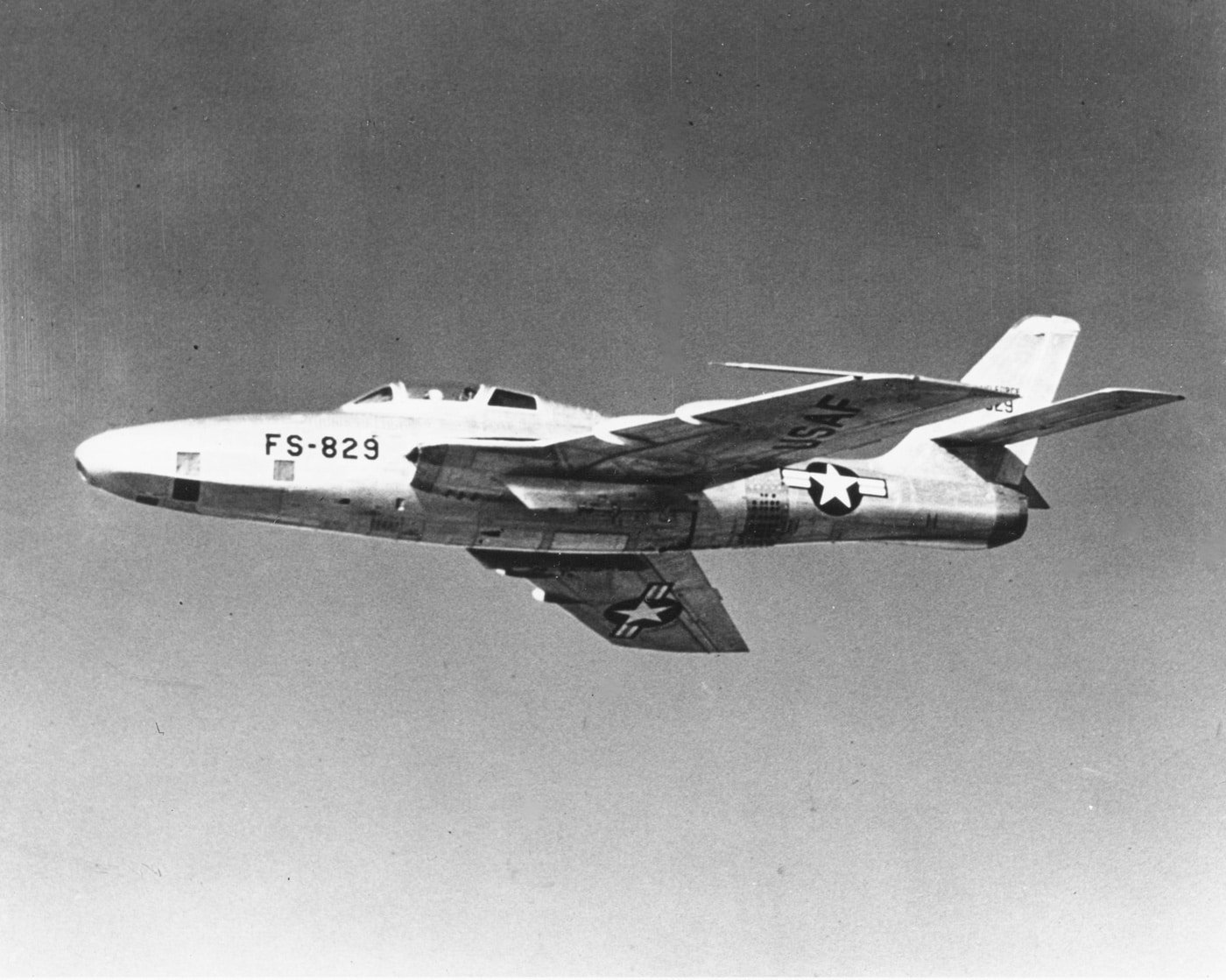
To further confound the issue is that Republic also developed the experimental XF-84H — which was dubiously (and unofficially) nicknamed the “Thunderscreech.” It was powered by a turbine engine that was mated with a supersonic propeller. Though it had the potential of setting the unofficial air speed record for propeller-driven aircraft, it was unable to overcome aerodynamic deficiencies. As a result, it never became operational. One of the two prototypes built is now on display at the National Museum of the United States Air Force.
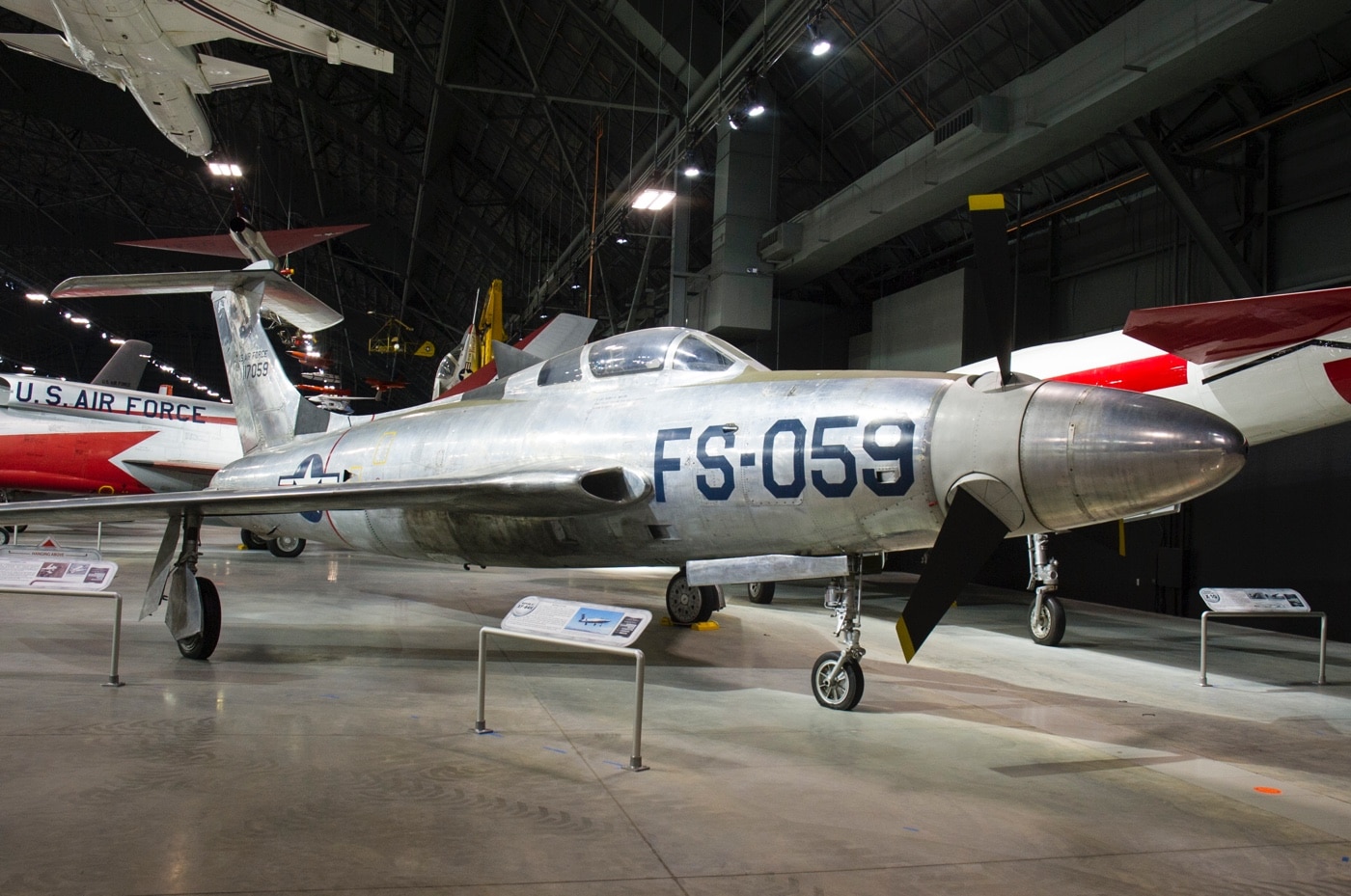
The F-84G was capable of delivering the Mark 7 nuclear bomb, while it was also outfitted with an improved J35-A-29 engine, autopilot, and was capable of inflight refueling. The F-84G also introduced the multi-framed canopy that was later retrofitted to earlier straight-winged F-84s
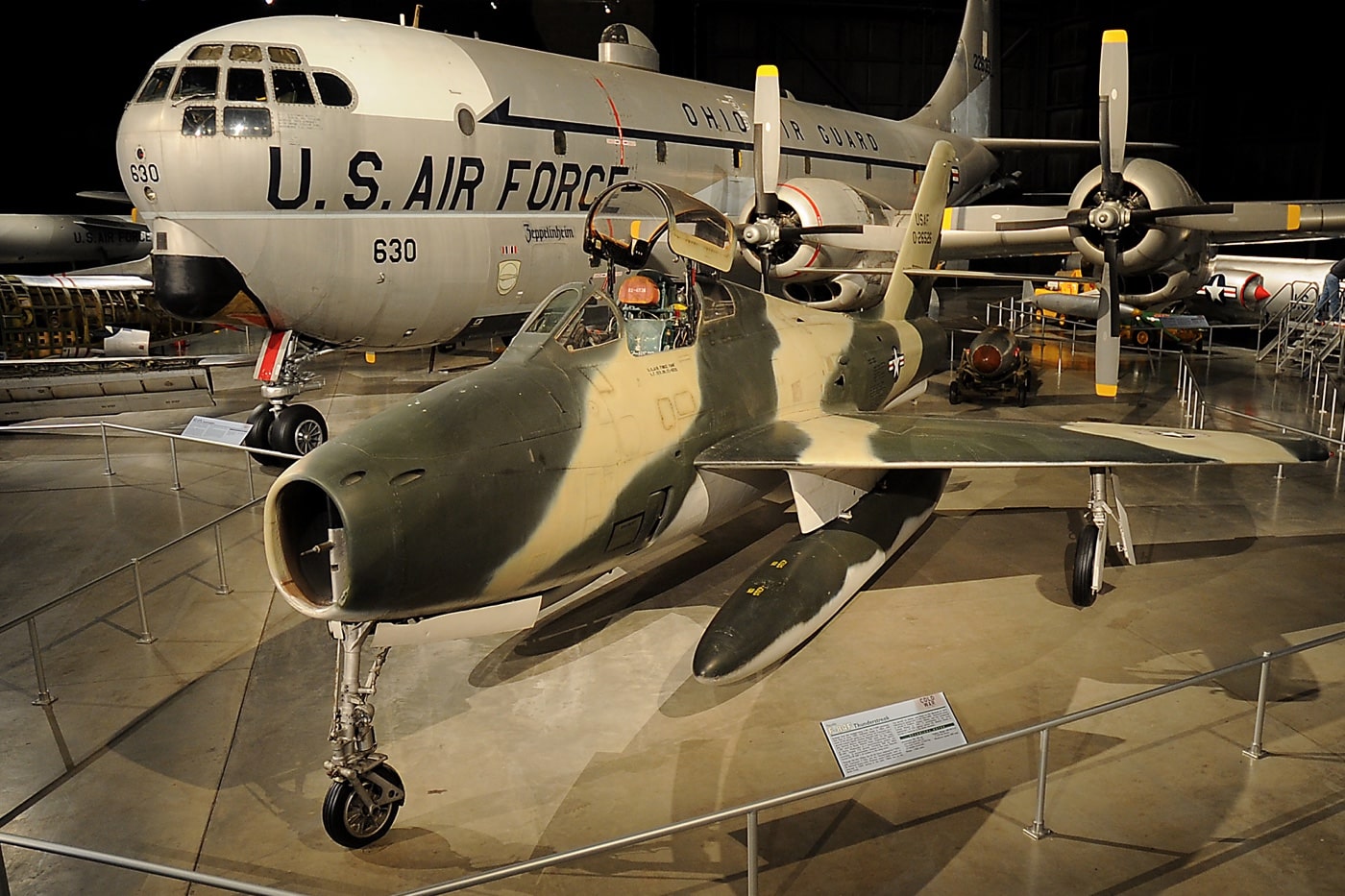
The Thunderjet was fittingly the first aircraft to be employed with the United States Air Force Thunderbirds demonstration team, from 1953 to 1955, while the F-84F Thunderstreaks were used by the team from 1955 to 1956. The F-84E was also flown by the Skyblazers, the demo team of United States Air Forces Europe (USAFE).
Foreign Operators
The Thunderjet was operated by more than a dozen nations around the world, including numerous NATO partners as well as by the Imperial Iranian Air Force, the Republic of China (Taiwan) and the Royal Thai Air Force.
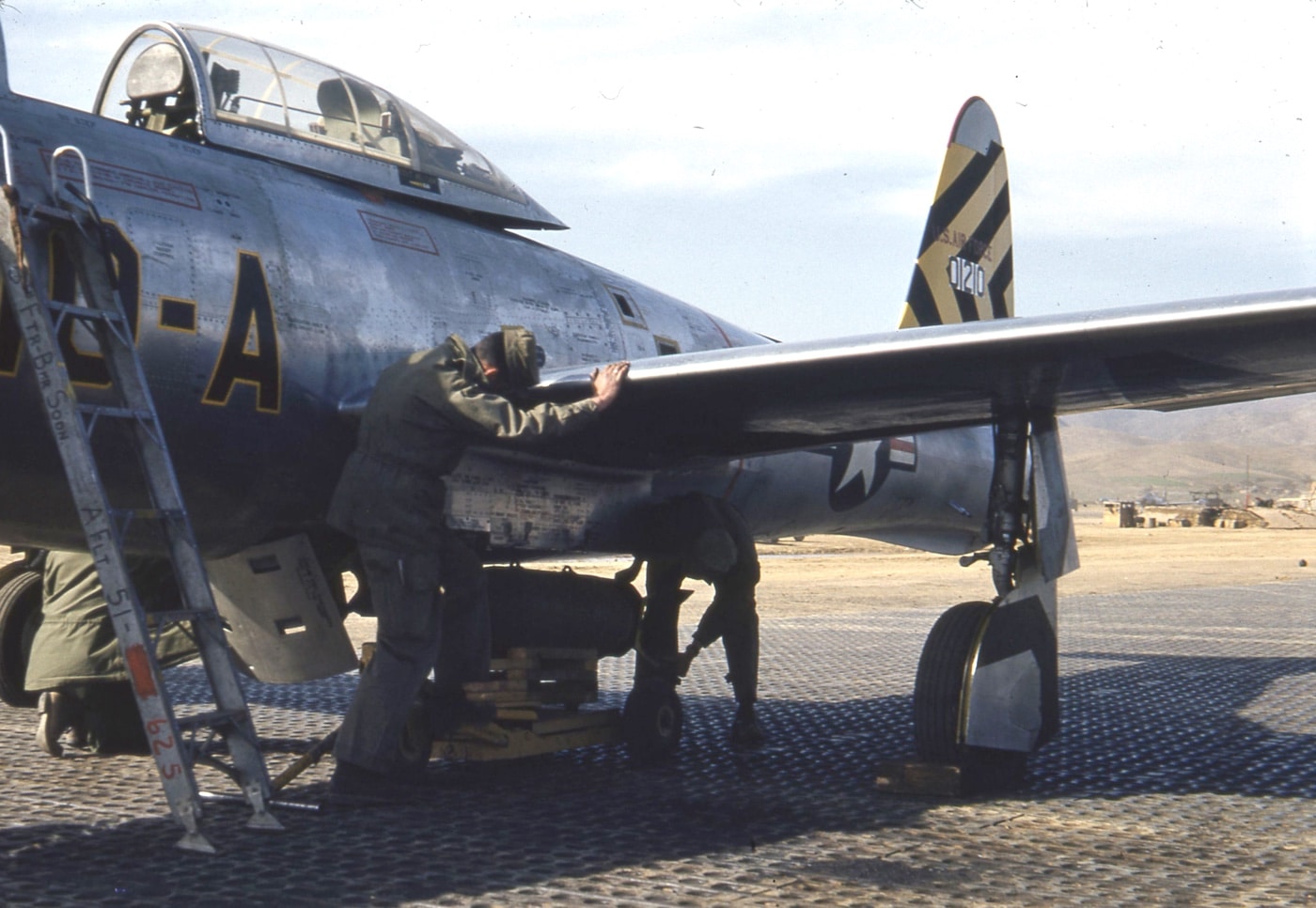
It was employed by the Taiwanese during the Second Taiwan Strait Crisis in 1958, and a number of the aircraft were engaged against the People’s Liberation Army Air Force MiG-15 and MiG-17 fighters, with losses on both sides. By that point, the Thunderjet’s age was showing and the Republic of China replaced its fleet of F-84s soon after.
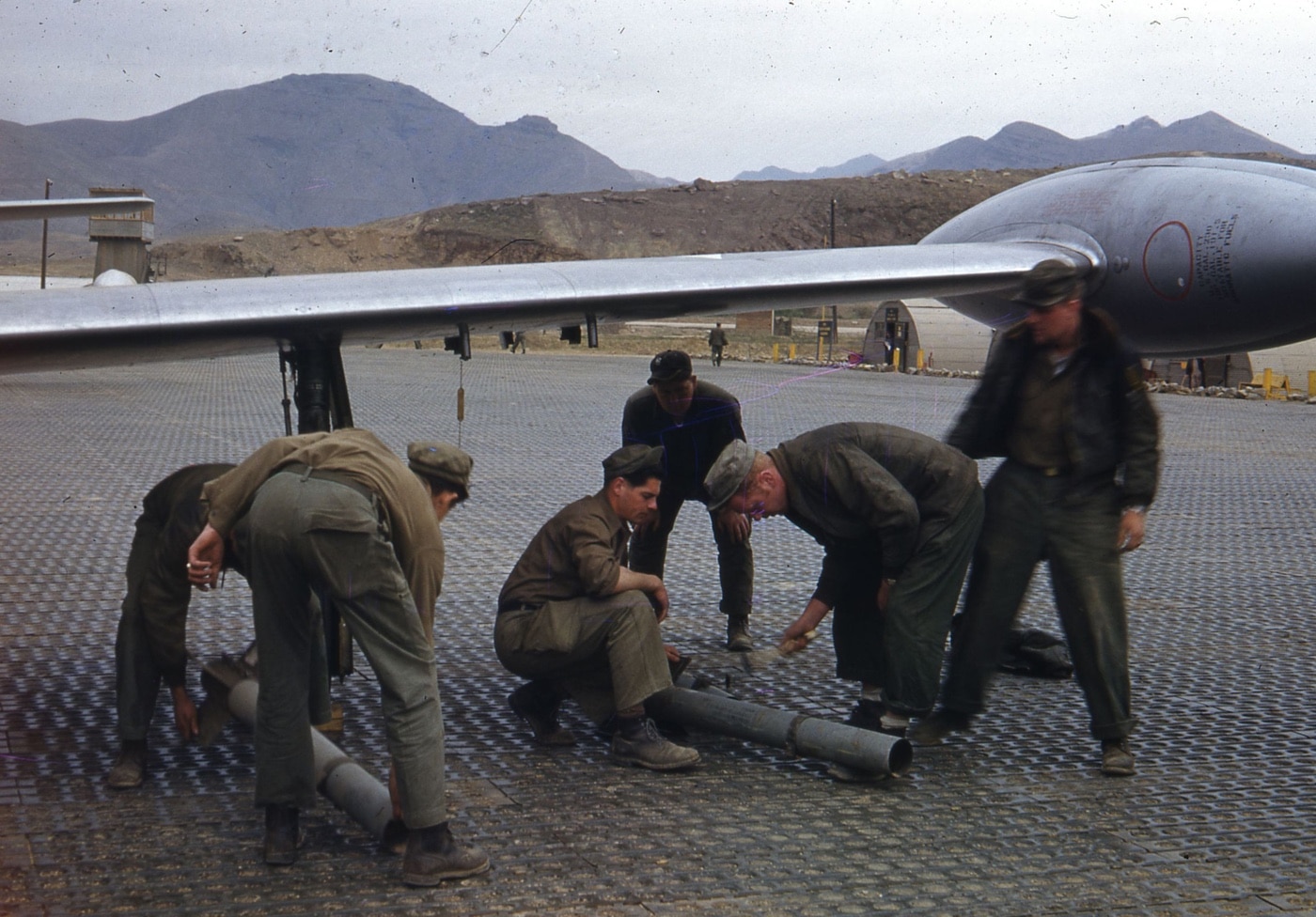
Another notable operator of the F-84 was Yugoslavia, which although essentially a one-party socialist/communist nation, was non-aligned. As a result, it acquired around 219 of the G models. U.S. ally Italy also operated the jet, and while cooler heads prevailed, the aircraft was almost used by both sides in the Trieste crisis in 1953. In fact, the Yugoslavian ground personnel at one base briefly panicked after Thunderjets flew overhead — as there was the assumption the aircraft were Italian!
Remembering the Thunderjet
By 1953, Republic Aviation had manufactured a total of 4,457 of the straight-wing Thunderjets, and those aircraft remained in use until Portugal phased out the last of its F-84Gs in 1976.
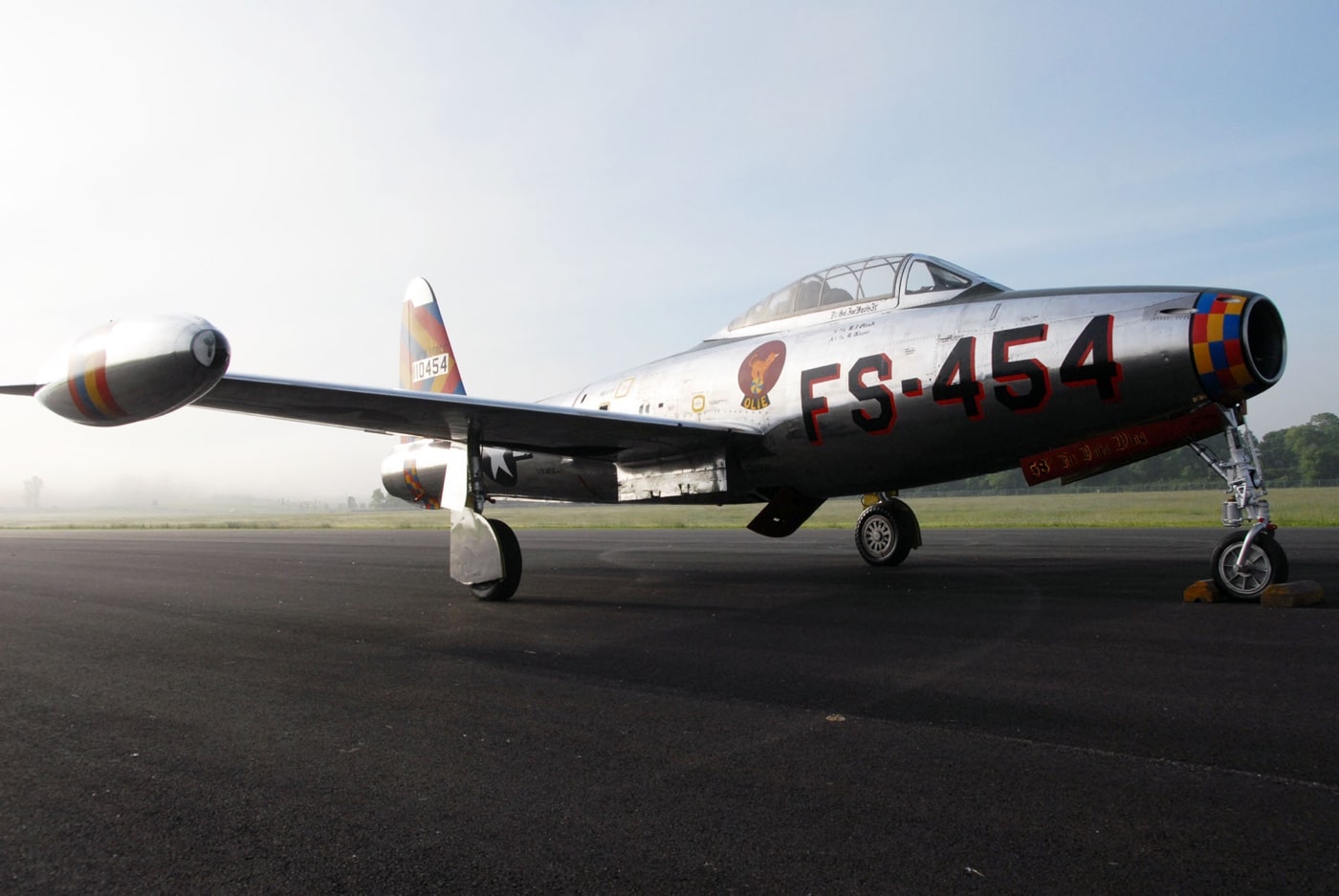
Fortunately, dozens of F-84s Thunderjets have survived, and the aircraft can be seen in numerous museums around the world. Though not the most advanced combat aircraft, it helped usher in the age of jet fighters.
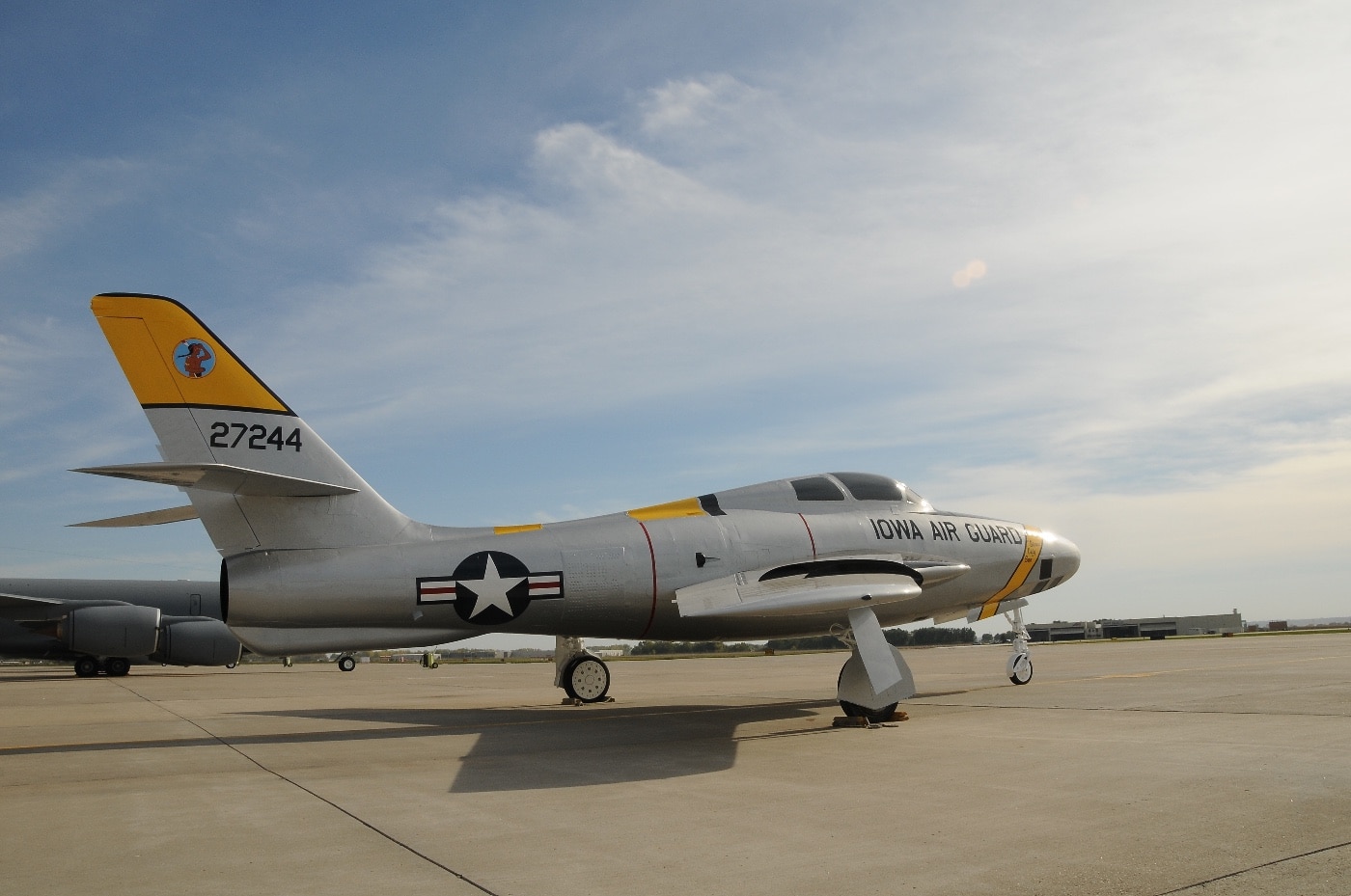
Moreover, F-84s were also used as testbeds for experiments, including power plant trials and aerodynamic research. It wasn’t a great leap forward, but it was arguably a step in the right direction — and it proved to be a truly capable warbird and one that led to even more advanced U.S. military aircraft.
Editor’s Note: Be sure to check out The Armory Life Forum, where you can comment about our daily articles, as well as just talk guns and gear. Click the “Go To Forum Thread” link below to jump in!
Join the Discussion
Read the full article here







![Best Micro Compact 9mm Pistols [Field Tested] Best Micro Compact 9mm Pistols [Field Tested]](https://i2.wp.com/gundigest.com/wp-content/uploads/EDC-X9-2-review-target.jpg?w=1024&resize=1024,1024&ssl=1)



